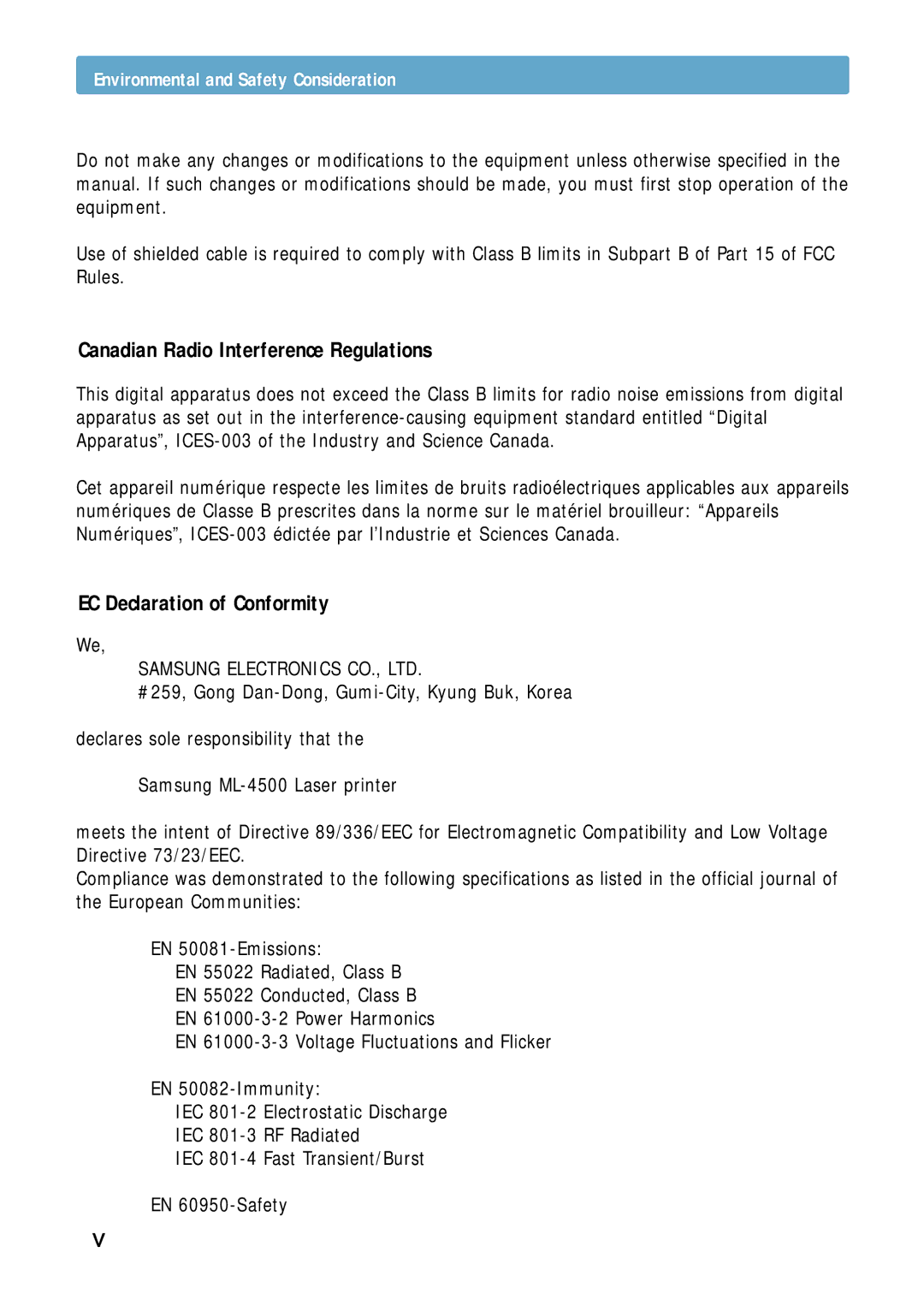ML-4500 specifications
The Samsung ML-4500 is a high-performance monochrome laser printer designed to meet the demands of small to medium-sized offices. This robust printer is known for its speed, efficiency, and reliable output, making it an excellent choice for businesses that prioritize productivity without compromising on quality.One of the standout features of the Samsung ML-4500 is its rapid printing capability. With a print speed of up to 27 pages per minute, it allows users to produce large documents in a short amount of time. The first page is typically delivered in less than eight seconds, which reduces wait times significantly and enhances workflow efficiency.
Quality is another hallmark of the ML-4500. The printer utilizes Samsung’s advanced laser technology, which ensures crisp and clear text and images. With a maximum print resolution of up to 1200 x 1200 dpi, users can expect professional-grade documents suitable for presentations and client communications. This level of detail not only enhances readability but also contributes to a polished appearance.
The ML-4500 is equipped with a variety of features designed to streamline operation. The device supports various media types and sizes, including envelopes, labels, and card stock, giving users the flexibility to handle diverse printing tasks. Additionally, it comes with a 250-sheet input tray, which reduces the need for frequent paper refills and allows for uninterrupted printing sessions.
In terms of connectivity, the Samsung ML-4500 offers USB and parallel port options, enabling easy integration with various computer systems. This versatility makes it compatible with a wide range of devices, enhancing its usability in diverse office environments.
Another significant characteristic of the ML-4500 is its energy efficiency. The printer is equipped with Samsung's One Touch Eco Button, which allows users to easily switch to eco-friendly printing modes. This feature not only lowers energy consumption but also minimizes waste, making it an environmentally conscious choice for businesses.
Overall, the Samsung ML-4500 is a reliable and efficient monochrome laser printer that balances performance and quality. With its high-speed capabilities, superior print quality, versatility in media handling, and energy-efficient features, it stands out as an exceptional option for businesses looking to optimize their printing processes while keeping operational costs in check.
